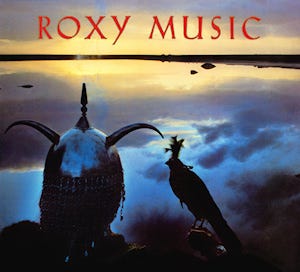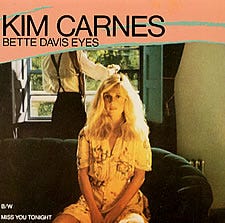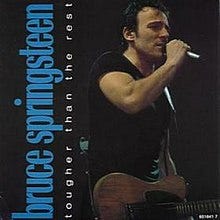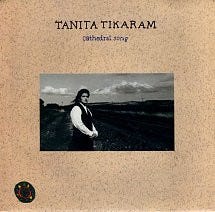As Night Falls: 80s Synth Music Recommendations for a City Waxing in Darkness
Think spacey synthesizers and detached grooves, if any.
For me, every night is touched very gently with both melancholy and optimism. Much of the tradition of synth-heavy pop seems to agree - there are whole discographies dedicated to this duality, illuminating what streetlights cannot. Some of this music has fallen under dreaded categorizations, from the almost pejorative “adult contemporary” to the newfangled “synthwave” that is permanently accused of derivativeness, and others have been spared the axe. In my opinion, these are some of the highlights from just the 80s, in chronological order of their parent albums’ appearances.
1. Kim Carnes, Bette Davis Eyes (1981)
To some, this is the first new-wave/synth-pop song to ever go all the way #1 on the Billboard charts, which happened in May of 1981. The opening synth riff is akin to a warm blanket on a cold night in the fall, but the biggest attraction (and point of contention for others) is Kim Carnes’ raspy, seductive vocal, which reaches its unmistakable zenith on “all the boys think she’s a spy”. Fundamentally this song is a tribute, not to Bette Davis or anybody else in particular, but to a magnetic, whispered power that often ensnares a young person. Set against a darkening skyline, this song will transport you from wherever you are listening to the dimly lit streets of a broken-hearted town, and for a while you will find it very difficult to move.
2. Roxy Music, More Than This (1982)
Even when their music lost its meagre edginess, Roxy Music always evaded the kind of hasty dismissal that befell other sophisti-pop bands like Spandau Ballet. I attribute this to a Beatlesque view of the recording studio and a willingness for creative pursuits as daring as having a whole track (the title track, Avalon, in case you’re curious) feature the voice of somebody, who you just heard singing, prominently. This song - really the whole album - gestures towards some kind of borderless, infinity-adjacent land which is not plagued by any of the mysticism or “oriental” romanticization in a decade that gave us “Japanese Boy” just one year earlier. As the saxophones croon and the synthesizers flood every corner of the song, there can really be no doubt that the sun is setting in the cover art.
3. The Cars, Drive (1984)
Even though it is breathtakingly beautiful, The Cars should not be known for this frankly sappy track. Their oeuvre should remain squarely steeped in the jangly, palm-muted new wave of their debut and sophomore records. But it bears repeating that Drive is beyond perfect. It swirls in pads which refuse to relent in their emotional intensity throughout, as Benjamin Orr’s powerful delivery passionately intones regret and desire. Despite its name I have never believed that this song should be played on car stereo systems, or even at Live Aid. This is a song made for quiet, mostly lonely nights, for looking out from your apartment and watching some arbitrary, fog-shrouded light flicker in the distance.
4. Prefab Sprout, Bonny (1985)
Prefab Sprout remain undeservedly snubbed in the pantheon of great 80s pop bands, but perhaps that is owed to their preference for restraint in a decade where pop was trying to overwhelm their listeners. Here the synthesizers share the soundscape with a delightfully tight groove and tasteful, sparing guitars. Lyrically, however, Bonny is in its own league. There is a devastation to the matter-of-fact repeated refrain of the chorus “Bonny don’t live at home”, which is made palpable through the also repeated act of “count[ing] the hours”, suggesting that time has become so intolerably abstract that enumeration emerges as a coping mechanism. I imagine one’s mind wandering down an empty boulevard in the dark, trying to piece together a past love.
5. Peter Gabriel + Kate Bush, Don’t Give Up (1986)
At its worst motivational music is a barrage of unending cliches and We Are The World-esque platitudes. At its best it is a collaboration between two of the greatest names in art rock’s history. Unlike other songs on this list Don’t Give Up has a concrete focus. In the throes of the UK’s Thatcher-era economic misery, the song is a reassuring hand stretched across the surging Thames of depression and isolation. While its animated bassline trudges along, a stunning vocal performance from both singers that captures the bevy of emotion which lies between hope and despair and the persistent synth pads lend this song a buoyancy that may save you from drowning, whether that’s in a bottle at your local watering hole or in a river.
6. Bruce Springsteen, Tougher Than the Rest (1987)
After Springsteen parted ways with the E Street Band, Jon Landau’s frenzied prosletyzing of “rock and roll’s future” lying in Springsteen’s Telecaster-wielding hands was easy to discredit. This was especially so Tunnel of Love, the first solo Springsteen album, which featured synthesizers and drum machines prominently. Unfortunately for any would-be critics, the songwriting on the album remains some of his strongest, and the biggest non-American hit off of it evinces this through callbacks to familiar characters in his grand American mythology: a “handsome Dan”, “sweet-talkin’ Romeo”, “other boyfriends” and of course a girl at the center of it all. It even opens with the helpfully prophetic declaration “[w]ell, it’s Saturday night/You’re all dressed up in blue/I’ve been watching you a while/Maybe you’ve been watching me too”.
7. George Michael, One More Try (1987)
Out of every image George Michael has donned - sex symbol, teenage heartthrob, regretful cheater - the lovelorn fatalism of One More Try might be hardest to believe. But as he wails “just let me go” the pain brewing beneath the surface of that velvet voice asserts its brutal presence amongst the haunting emptiness of the synth-clad, coldly grooved instrumental. Recontextualizing this song in the aftermath of revelations about his sexuality - he deliberately avoids using any pronouns in this song and possibly uses the taboo of a teacher-student relationship to disguise the even worse sin of queer love in 1987 - only accentuates that anguish. He is willing, however, in spite of it all, to give it “just one more try”, which is for me a drop of hope in an ocean of mourning. If there is ever a song to wash over you as the evening fades away and your reflection is clearer than ever in the window, it is this one.
8. Tanita Tikaram, Cathedral Song (1988)
The tail end of the 80s precipitated the female singer-songwriter explosion of the 90s that has included such mainstays as Tori Amos and Fiona Apple. While those artists were very good at creating storms, I would be remiss to ignore the drizzle, interspersed by sunshine, that Tanita Tikaram created on Ancient Heart. While the album is mostly remembered in terms of the lyrical mysteries of her biggest hit, Twist In My Sobriety, this one deserves far more offerings placed at its altar. Once again, it is a dazzling work from a queer artist - and yes, I also think this one is about queerness - swimming in an ocean of synthesizers, but it has the rugged simplicity of a folk song, buoyed by Tikaram’s husky contralto. It makes for very good listening when the light no longer streams through the stained glass. (Side note: I have been obsessing over the way she pronounces “serious” in this song for weeks now.)
9. The Durutti Column, Requiem Again (1989)
Ambient music was one of the most important creative outposts of the 80s, and it came in various shades, from the pastoral dream pop of The Cocteau Twins and a personal favorite Virginia Astley to the space-inspired experiments of Brian Eno and David Sylvian. While The Durutti Column fell into the post-punk category quite neatly for their first albums, tracks like Requiem Again borrow heavily from the practices of ambient music, as a wallowing, tear-soaked pad resonates throughout the whole song. Vini’s guitar playing is unsubtle, full of drama and displacement created by the delay effect present throughout the song. There are no words spoken or sung; yet a profound aching can be gauged. Another sleepless night for me indeed.
10. The Blue Nile, Saturday Night (1989)
For an album that was released at the very end of the 80s nothing has ever sounded quite like Hats, which remains Scottish ambient folk group The Blue Nile’s best record to date. Every song is engulfed in imagery of cities in their nighttime jackets, from late night trains to empty bars. On Saturday Night that imagery is stripped to its necessities: an “ordinary girl”, the “storefronts all close[d] in paradise” and the must-have “cherry light”. Despite the weight of its ornate, orchestral backing there is a plainness to the vocal and the lyrics that belies a deeper meaning: who we love is insignificant. It is love itself that drives away the rain, that promises warmth in a city’s otherwise cold streetlight and a song’s strictly mechanical groove. It is love itself that “makes the world alright”.
All Night Long
I have lived in cities all my life, and these songs have helped me make sense of otherwise meaningless nights so far. But there are far more nights to be had and there is far more musical beauty to accompany it. It’ll just take a little more soul-searching to uncover it all. For now, enjoy the playlist below, which includes five other synth-adjacent 80s songs.













